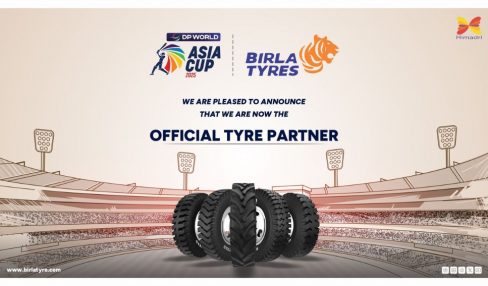Fleet Fuel Card Solutions For Maximizing Savings And Control For Business Operations
11 November 2025
6 Mins Read

- Understanding Fleet Fuel Card Technology And Infrastructure
- How Do Fleet Fuel Cards Reduce Operating Costs?
- What Security Features Protect Fleet Card Programs?
- Integrating Fleet Cards With Vehicle Management Systems
- Which Industries Benefit Most From Fleet Fuel Cards?
- Real-Time Reporting And Analytics Capabilities
- How To Implement Fleet Fuel Cards Across Your Organization?
- Comparing Fleet Card Providers And Features
Running a fleet isn’t cheap, but fuel cards have changed the game for a lot of companies.
Instead of chasing down receipts or guessing at fuel costs, these cards automate basically everything:
- Tracking,
- Discounts,
- Spending controls.
Businesses using a WEX Fleet Card have seen annual savings pass $1,500 per vehicle, plus they finally get a clear view of where their fuel money’s really going.
WEX customers tap into a huge nationwide savings network and earn extra per-gallon discounts at partner stations.
The WEX Fleet Card works at roughly 95% of fuel stations in the country and 45,000 service locations.
It is serving about 19 million vehicles and more than 600,000 companies as of 2024. The icing on the cake? Real-time alerts, custom purchase limits, and detailed reports that flag suspicious spending and keep operations tight.
Understanding Fleet Fuel Card Technology And Infrastructure
Fleet fuel cards aren’t just fancy credit cards—they’re built for business fleets from the ground up.
Each swipe at the pump connects directly to the fuel system, automatically capturing detailed info such as
- Odometer readings,
- Driver IDs,
- Gallons pumped,
- Fuel grade.
No one’s scribbling notes or stapling receipts anymore. Everything’s logged, down to the penny.
Behind the scenes, a super-connected network links merchants, processors, and fleet platforms.
When someone uses a WEX card, that transaction runs across secure data rails that instantly check spending against the rules you’ve set: what type of fuel, what time of day, total amount, all that stuff.
This stops unauthorized use while still giving drivers flexibility on the road. The system processes thousands of transactions every second, and if something odd pops up, managers get pinged immediately.
Modern systems use cloud and mobile tech, so managers see everything live—fuel usage, driver habits, and cost outliers on one dashboard.
These insights often highlight inefficiencies you’d never spot otherwise, whether it’s too much idling, sketchy detours, or plain-old fuel theft.
How Do Fleet Fuel Cards Reduce Operating Costs?
Here’s where it gets interesting: fleet fuel cards cut costs in several ways at once. The obvious one is fuel discounts. WEX Fleet Card users save 3¢-15¢ per gallon automatically —no coupon-hunting required.
If your fleet burns through 5,000 gallons each month, that’s around $750 saved—right off the top.
The hidden savings come from less administrative chaos. Gone are the days of tracking down fuel receipts, sorting through credit card statements, or explaining odd totals.
The card system automates all that, pushing clean reports that are basically tax-ready. On average, companies reclaim 20–30 admin hours every month just from smoother processing.
What really drives long-term savings, though, is behavior. Once drivers know their fuel use is being monitored, the impulse to spend fades.
Managers can spot vehicles gulping more gas than expected, dig into maintenance issues, and fix bad routes before they drain the budget.
One distributor, for example, saved 12% monthly simply by reworking routes based on card data. Not bad, right?
What Security Features Protect Fleet Card Programs?

Security’s a big deal, and fleet cards take it seriously. Each WEX Fleet Card comes with layered controls.
You can set spending caps, limit merchants, or block certain purchases entirely based on driver or vehicle type.
All of it updates in real time, so if something feels off, you can tweak permissions right away.
Every transaction also ties back to a verified driver. Instead of anyone being able to swipe like a normal credit card, drivers enter a PIN or ID at the pump. That one step creates a solid paper trail that discourages misuse and makes issue tracking a breeze.
Some systems even connect to the vehicle’s GPS, ensuring the purchase location matches where the truck actually is.
And then there’s live monitoring. If someone tries buying fuel at midnight three states over? Managers get notified instantly.
Cards can be deactivated on the spot, slashing fraud risk by up to 90%. It’s less “find the problem later” and more “stop it before it happens.”
Integrating Fleet Cards With Vehicle Management Systems
Fleet cards aren’t standalone anymore—they feed a ton of data into broader vehicle management systems.
When hooked up with GPS, it’s easy to see if a fuel purchase makes sense. If the tank’s filled 50 miles from where the truck was logged, that’s a red flag right there. Integration exposes the kind of scams receipts alone would never catch.
Maintenance gets a major upgrade, too. When one vehicle starts burning more fuel than its peers, that’s usually an early sign that something’s off.
Fleet tech can cross-check this data to predict and prevent breakdowns, cutting emergency repairs nearly in half and extending vehicle life.
The same data also helps with driver coaching. Some drivers just get better fuel mileage by driving smarter! Now companies can pinpoint who’s doing what right and use it to train others.
Many fleets see an 8–15% boost in overall fuel efficiency after rolling out training based on these insights.
Which Industries Benefit Most From Fleet Fuel Cards?
Construction outfits love the Fleet fuel cards because they can handle the full range of vehicles! From pickups to excavators —across scattered sites.
WEX cards work not just at gas pumps but at 45,000 service spots too, meaning repairs and maintenance all roll into one clean invoice.
They even make it easy to track project-specific fuel use for cleaner job costing and billing.
Trucking and logistics businesses, living on razor-thin margins, see fuel savings as a straight win.
Nationwide pricing consistency means no more guessing at costs when crossing states. The detailed reports also help when calculating surcharges or planning routes around cheaper stations.
And for field-heavy service operations—think landscaping, HVAC, utilities—fleet fuel cards keep tabs on far-flung teams.
They track which crew used how much fuel for which call. That kind of transparency tends to cut fuel costs 15–20%, mostly because unnecessary stops or side trips all but disappear.
Real-Time Reporting And Analytics Capabilities
Fleet card systems generate piles of data, but thankfully, the dashboards make sense of it all. You get live metrics—cost per mile, fuel efficiency, and exception alerts!
That too, without touching a spreadsheet. Reports can even auto-send to whoever needs them.
Predictive analytics forecast future fuel demand, enabling finance teams to budget smarter or negotiate better bulk rates.
The same tools flag suspicious patterns! Let’s say a fuel spike without a matching mileage reading, before it turns into an expensive problem.
Benchmarking’s another underrated perk. Companies compare their performance against industry numbers or internal trends to see who’s leading (and who’s lagging).
Over time, these insights help shape purchasing choices, driver training, and overall strategy far beyond day-to-day refueling.
How To Implement Fleet Fuel Cards Across Your Organization?
Rolling out a fleet fuel card program takes a bit of coordination, but it’s easier if everyone’s on board from the start.
Finance wants accounting integration, operations care about usability, and IT focuses on security.
Bringing those minds together upfront avoids messy surprises later. Many companies set up cross-functional teams so finance, IT, and field managers all have a say.
Start small! Pilot it with a few vehicles. That way, you’ll work out the kinks before launching company-wide. Don’t forget clear communication and driver training.
People resist change (and some drivers love their personal credit card points), so show them what they gain: no more expense reports, less hassle, faster reimbursements.
Keep a pulse on adoption over the first 60–90 days. Spot early issues, make tweaks, and celebrate the quick wins.
Companies that take the structured route almost always hit full deployment within three months.
Comparing Fleet Card Providers And Features
Choosing a provider boils down to three things: coverage, tech, and support. WEX has one of the widest nets, covering nearly 95% of U.S. fuel stations.
That’s huge. Drivers rarely need to hunt around, and prices stay competitive no matter where they go. Plus, its 45,000 service locations are a nice touch for maintenance convenience.
Tech is where modern platforms stand apart. Cloud-based systems are faster, more reliable, and play nicely with other business tools via APIs. Some even use AI to detect fraud patterns or suggest route optimization.
Good tech’s great, but real support still matters. Top providers back you up with dedicated account managers, 24/7 help, and tons of resources.
Being able to order new cards or pull reports online is nice. But having an expert there when something breaks? That’s worth its weight in fuel savings.
Read Also:

















